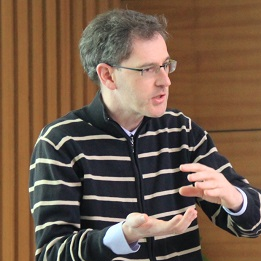Digital Petroleum Geomechanics
A special issue of Geosciences (ISSN 2076-3263).
Deadline for manuscript submissions: closed (30 June 2019) | Viewed by 11880
Special Issue Editors
Interests: petroleum related rock mechanics; hydraulic fracturing; sanding
Special Issues, Collections and Topics in MDPI journals
2. Department of Seismology, Centro de Investigación Científica y de Educación Superior de Ensenada, Ensenada, Mexico
Interests: seismic waves; waves in random media; acoustics of porous media; poroelasticity; poromechanics; porosity and permeability; physics of rocks
Special Issue Information
Dear Colleagues,
We are organizing a Special Issue focusing on both fundamental and application of Digital Rock Mechanics (DRM) in petroleum geo-mechanics. We are targeting original high-quality works and welcome experimental, numerical, and case studies in petroleum geomechanics, preferably with a high level of DRM involvement.
Most petroleum applications involve significant amounts of complexities due to scale-dependency of the problems, as well as tightly coupled physical phenomena. High stresses, the influence of fluid movement, temperature changes and disturbances due to chemical reactions are amongst the roots of these complexities. Interaction or superposition of these effects will initiate in micro (even nano) scale and the coalescing of these changes will contribute to overall rock behavior (deformation and failure). As a result, a better understanding of the small-scale rock behavior and in-depth visualization and modeling of such phenomenon have come to the attention of scientific society in the recent years. Computed Tomography (CT) in general and micro CT (uCT), in particular, have been instigated to unlock these complications more than ever. Pore scale rock deformation before, during and after multiphysic behaviour is observed experimentally using 3D images and/or modeled numerically where its scientific importance has been acknowledged in a considerable number of articles. However, being a relatively new field of research, there are numerous gaps in understanding (e.g., nature of the grain-grain interaction, grain contact mapping, micro scale-to-macro scale behavior, etc.).
Dr. Mohammad Sarmadivaleh
Dr. Tobias M. Müller
Guest Editors
Manuscript Submission Information
Manuscripts should be submitted online at www.mdpi.com by registering and logging in to this website. Once you are registered, click here to go to the submission form. Manuscripts can be submitted until the deadline. All submissions that pass pre-check are peer-reviewed. Accepted papers will be published continuously in the journal (as soon as accepted) and will be listed together on the special issue website. Research articles, review articles as well as short communications are invited. For planned papers, a title and short abstract (about 250 words) can be sent to the Editorial Office for assessment.
Submitted manuscripts should not have been published previously, nor be under consideration for publication elsewhere (except conference proceedings papers). All manuscripts are thoroughly refereed through a single-blind peer-review process. A guide for authors and other relevant information for submission of manuscripts is available on the Instructions for Authors page. Geosciences is an international peer-reviewed open access monthly journal published by MDPI.
Please visit the Instructions for Authors page before submitting a manuscript. The Article Processing Charge (APC) for publication in this open access journal is 1800 CHF (Swiss Francs). Submitted papers should be well formatted and use good English. Authors may use MDPI's English editing service prior to publication or during author revisions.
Keywords
- digital rock mechanics
- micro CT
- grain size modelling
- vitalization
- grain-grain contact
- grain shape
- micro crack
- hydraulic fracturing
- sanding
- subsidence
Benefits of Publishing in a Special Issue
- Ease of navigation: Grouping papers by topic helps scholars navigate broad scope journals more efficiently.
- Greater discoverability: Special Issues support the reach and impact of scientific research. Articles in Special Issues are more discoverable and cited more frequently.
- Expansion of research network: Special Issues facilitate connections among authors, fostering scientific collaborations.
- External promotion: Articles in Special Issues are often promoted through the journal's social media, increasing their visibility.
- Reprint: MDPI Books provides the opportunity to republish successful Special Issues in book format, both online and in print.
Further information on MDPI's Special Issue policies can be found here.






